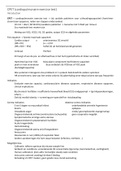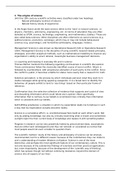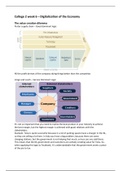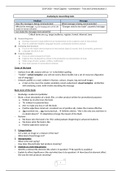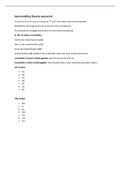Chapter 1: Religion and Popular Culture
Cognitive Approach - How do certain beliefs lead to certain practices?
(p.8) - Frazer’s theory of animism: religion is the result of unsolved
mystery and will disappear eventually
Functional Approach - What does religion do for people and/or society?
(p.9) - Durkheim’s sacred and profane: society = sacred and profane =
individual. The group identity/social cohesion can be
maintained through totemism (because it is sacred). All religion
is therefore about social cohesion.
- Weber’s protestant ethic and inner-worldly asceticism (living
simply within the world systems): “Capitalism [now] no longer
needs the piety of Protestantism to support and keep it going.”
- Marx’s superstructures (“are designed to maintain unequal
power relations”): religion = superstructure in order to “keep
people in line and unwilling to resist and revolt against
capitalism”.
- James’ varieties of religions: religion is driven by
psychological needs. “If a religious experience seemed real and
true to the individual, then for them it was.”
- Eliade’s history of religions: sacred = supernatural or
extraordinary and has its own language (symbolism and myth)
and profane = everyday life.
Return to the - Boyer: “Recurrences [such as prayers, rituals and symbols]
Cognitive (p.14) occur, because our brains are wired similarly and thus various
peoples come up with similar content in belief and practice.”
- Lawson & McCauley: one should use both the interpretative
(meaning within various beliefs and practices, such as
representations) and the explanatory (causal relationships, such
as brain functions) method for exploring religion.
- Geertz’ thick description (recording not only what was
happening, but also its significance): “Religion is part of
culture and culture is the shared meaning behind various
symbols and actions.” Moods (feelings) and motivations
(actions) of certain symbols differ among different people. The
decoding is different, he would say, as we can see later on.
Therefore, focus on the local rather than the universal.
“Lived Religion” - The “Lived Religion” Approach gives more consideration to
Approach (p.16) the activities of the everyday.
- McGuire: “Many people’s religious practice does not fit clearly
definable categories of the world religions.” Therefore, it is
more useful to look at religion in everyday life, because for
individual people, it’s about practical coherence (it needs to
make sense in their own lives) rather than logical coherence.
- Tweed highlights “the non-static state of religions”.
Issues of Gender, - Warne: “Race, class, and gender were simply not issues on the
Race, and Class radar until the twentieth century.”
(p.17) - Case: Christmas in Canada




